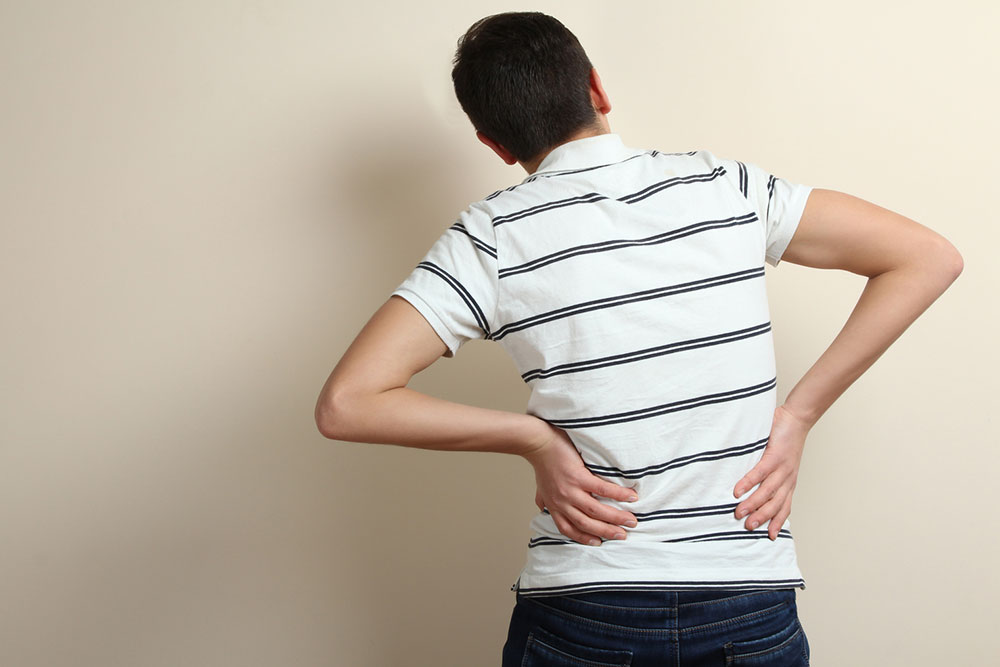Comprehensive Guide to Understanding and Managing Lower Back Pain
Lower back pain is a widespread issue affecting most adults, caused by muscular, skeletal, or internal factors. This comprehensive guide elaborates on the causes, symptoms, diagnosis, and treatment options, emphasizing preventive strategies to maintain a healthy back. From muscle strains to degenerative disc disease and internal organ issues, understanding these factors helps in early detection and effective management. Whether dealing with acute or chronic pain, adopting proper posture, regular exercise, and timely medical consultation are essential for long-term back health and mobility.

Comprehensive Guide to Understanding and Managing Lower Back Pain
Lower back pain is one of the most common health complaints worldwide, impacting a significant portion of the adult population. Research indicates that over 80% of individuals will experience lower back discomfort at some point in their lives, making it a pervasive issue that influences daily activities, productivity, and overall quality of life. This extensive guide explores the causes, classifications, symptoms, and effective management strategies for lower back pain, aiming to equip readers with knowledge to identify symptoms early and seek appropriate treatment.
The complexity of lower back pain stems from its multifactorial origins, involving bones, muscles, nerves, and soft tissues in the lumbar region. Often, it isn’t a standalone disease but rather a symptom that indicates underlying problems or strain. The severity of the pain can vary widely—from mild, nuisance-level aches to sharp, debilitating episodes that incapacitate movement. Recognizing the various forms and causes of lower back discomfort is crucial for proper diagnosis and treatment.
Lower back pain can be classified into three main categories based on duration:
Acute (lasting less than six weeks)
Sub-chronic (lasting between six to twelve weeks)
Chronic (persisting beyond twelve weeks)
The lumbar area, comprising five vertebrae labeled L1 through L5, bears most of the body’s upper weight and plays a pivotal role in mobility and stability. These vertebrae, along with surrounding tissues, intervertebral discs, ligaments, and tendons, work in harmony to support the entire upper body, facilitate movement, and absorb shock during activities like walking, running, or lifting.
The intervertebral discs are essential components that act as shock absorbers between vertebrae, maintaining proper spacing and facilitating smooth motion. Ligaments and tendons further stabilize the spine by securing bones and connecting muscles. These structures are delicate and vulnerable to various stressors, making even minor movements or pressure points potentially painful.
Understanding the root causes of lower back pain is critical for effective management. Common causes encompass a range of muscular, skeletal, and internal factors, which are detailed below.
Common Causes of Lower Back Pain
Muscle strains and ligament sprains, often resulting from overstretching, improper lifting techniques, sudden movements, or awkward postures. These are among the most frequent causes and usually resolve with rest and conservative treatment.
Degenerative disc disease, where intervertebral discs lose elasticity and cushioning ability over time, leading to pain, stiffness, and sometimes nerve compression.
Kidney stones, which are mineral deposits that form within the kidneys, can cause referred pain in the lower back region, often sharp and excruciating.
Kidney infections, originating from urinary tract infections, may result in severe back pain coupled with symptoms like fever, chills, and nausea, necessitating prompt medical intervention.
Gastrointestinal issues or inflammatory bowel diseases such as ulcerative colitis can cause referred abdominal cramping, discomfort, and sometimes low back pain.
Pancreatitis, characterized by inflammation of the pancreas, often results in upper abdominal discomfort radiating to the back, requiring specific treatment approaches.
In addition to these internal medical causes, other external factors include poor posture during sleep or standing, minor injuries sustained during daily activities, herniated or slipped discs, damage to spinal tissues, and trauma from accidents or falls. Recognizing the precise source of pain is key to selecting effective treatment options and preventing recurrence.
When Should You Consult a Healthcare Professional?
While occasional lower back discomfort might resolve with rest and home remedies, persistent, worsening, or severe pain warrants professional medical evaluation. Seek immediate care if the pain is unrelenting despite rest, follows an injury, or significantly impairs your ability to perform daily tasks, including standing, walking, or sleeping. Early diagnosis can prevent complications and facilitate effective treatment.
Diagnostics and Imaging Tests
To accurately diagnose the root cause of lower back pain, healthcare providers utilize various imaging and diagnostic tools such as CT scans, MRI, bone scans, myelograms, discography, nerve conduction studies, and ultrasound. These tests help identify structural abnormalities, nerve impingements, disc herniations, inflamed tissues, or other issues affecting the spinal region.
Effective Treatment Strategies for Lower Back Pain
Initial management of back pain typically involves conservative, non-invasive therapies aimed at relieving symptoms and restoring function. These include physical therapy, medication, and lifestyle modifications. When conservative measures fail or if the condition involves significant structural damage or neurological deficits, surgical options may be considered.
Physical therapy focusing on strengthening the core muscles, improving flexibility, and correcting posture
Application of hot or cold packs to reduce inflammation and alleviate discomfort
Medications such as NSAIDs (non-steroidal anti-inflammatory drugs), analgesics, muscle relaxants, or antidepressants for nerve pain
Surgical interventions, including procedures like artificial disc replacement, spinal fusion, foraminotomy, or laminectomy, reserved for severe or unresponsive cases
Preventive Measures to Reduce Lower Back Pain
Preventing lower back pain involves adopting healthy habits and ergonomic practices. Regular exercise plays a pivotal role in strengthening back muscles, enhancing flexibility, and maintaining a healthy weight. Proper posture during daily activities, such as sitting at work or lifting heavy objects, is essential. Using medium-soft mattresses can provide better spinal support while sleeping, and engaging in safe physical activities helps maintain overall back health.
Although popular beliefs suggest that shoe sole type influences back health, current scientific evidence does not support a direct link between shoe soles and back pain relief. Nonetheless, wearing comfortable, supportive footwear can contribute to overall posture and walking mechanics.





